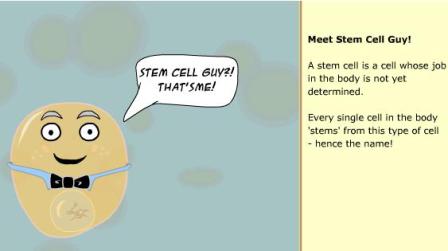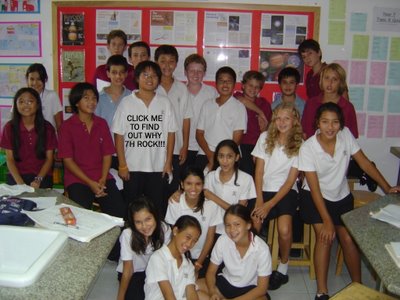pictures of the galactic centre.
You wouldn't think they'd miss a lump the size of a zillion suns lurking down
there in the middle of the galaxy, would you! But it was surprisingly hard to
locate. Professor Andrea Ghez of the University of California, Los Angeles, led
a team who brought it off.
Andrea Ghez: The idea of super massive black holes, black holes that
have a mass of maybe a million to a billion times the mass of our sun wasn't
predicted theoretically, unlike the little black holes that were first thought
of theoretically and then demonstrated observationally. So people didn't believe
that these things could exist, they had no idea how they would form, so why
would there be one at the centre of our galaxy?
Robyn Williams: So how was the argument turned around?
Andrea Ghez: The argument was turned around by doing the experiment to
look for a super massive black hole, and the way we did this was using
principles from freshman physics, measure the masses of a thing by watching how
something orbits around it, just like planets orbiting the sun; you can weigh
the mass of the sun and figure out how small it is. You can actually weigh a
black hole at the centre of our galaxy by watching how stars orbit the centre of
the galaxy. This way you prove that there's a lot of mass inside a very tiny
volume, and that's the proof of a black hole.
Robyn Williams: I suppose, it being black, you can't actually take a
picture of it, can you?
Andrea Ghez: We've seen the plasma around it, and this is a material
that's very hot because it's falling into the black hole, so in that sense you
do have another signature of a black hole by looking at things being heated by,
again, it's the gravity heating things up locally. But from that you can't prove
that it's a black hole but you can look at its dining habits.
Robyn Williams: What it's about it eat. Remind us what a plasma
is.
Andrea Ghez: A plasma is a very hot set of electrons and protons that
are separated from each other, whizzing around.
Robyn Williams: So it's the ingredients of an atom that's not in a
kind of atomic structure, as such, it's just the mash.
Andrea Ghez: Right. Plasma is a gas that's so hot that the electrons
can't stay bound, so they separate out and the atoms aren't whole, you just see
the electrons and the protons and neutrons.
Robyn Williams: So how far away is this plasma soup from the black
hole itself?
Andrea Ghez: The plasma soup is quite close to the black hole. It
extends roughly the size of our solar system. I guess it's a good size to think
of in thinking about the plasma.
Robyn Williams: Well, I would have thought that close enough to be
swallowed ages ago.
Andrea Ghez: It is getting eaten up but it's continually
replenished.
Robyn Williams: How?
Andrea Ghez: From stars that lose their outer shells, that stuff that
falls in towards the centre of the galaxy gets heated up by the black hole and
that's the plasma that you see today.
Robyn Williams: So you're suggesting, in some ways, that the black
hole is characterised by a kind of halo effect of this plasma, and this is what
you might expect to find in other galaxies as well?
Andrea Ghez: Absolutely. Whatever we see in our own galaxy, you expect
to see in other galaxies. Our galaxies are completely garden variety, ordinary
galaxies, so whatever is here must exist in many other galaxies.
Robyn Williams: Why so prosaic? Why can't ours be unique?
Andrea Ghez: Whenever astronomers think that we are unique, we get
ourselves into trouble. I think the general argument is we're probably pretty
typical; our sun is pretty typical and our galaxy is quite common. We see things
that look like our galaxy in outer space.
Robyn Williams: Give me an idea of the ways in which that black hole
may have grown. Was it there more or less in the beginning of the formation of
the galaxy, and has it got bigger? What else has happened to it?
Andrea Ghez: There was a large debate just a few years ago; which came
first, the galaxy or the black hole? And today we actually recognise that they
had to form together. We've recognised that there's a connection between the
size of the black hole and the size of the central part of the galaxy, and the
only way that that could exist, that connection, is if they were formed
together. So they came together and they grew together. Black holes get bigger
by swallowing material around it, so they grow throughout their life, and our
galaxy's also growing throughout its life.
Robyn Williams: Is there a limit, like there is in stars, to that sort
of growth? In fact, I think there is a formal limit to the size of stars,
indeed. And is there a point at which a black hole cannot grow anymore?
Andrea Ghez: That's a good question and people are actually posing
that question today, and we don't have evidence but there's certainly theories
that there may be ways in which black holes regulate how large they get, but we
don't know the answer today.
Robyn Williams: We may have many black holes kind of budding off.
Andrea Ghez: Maybe. Or maybe they get so big that they keep things
from falling onto it. In other words, when they get big, they go on a diet.
Robyn Williams: So they repel stuff. I see.
Andrea Ghez: That's one idea. We don't know for sure.
Robyn Williams: What was the paper you published in December?
Andrea Ghez: We published a paper on the first view of the centre of
our galaxy using something called laser guide star adaptive optics. It's new
technology that has allowed us to get the most pristine view of the centre of
the galaxy that we've ever had before.
Robyn Williams: So you can actually, in other words, picture it?
Andrea Ghez: We can picture it. We can make the prettiest picture
you've ever seen. We've had the telescope experience Lasik surgery, so the
pictures that we're obtaining today are much clearer than what we could see
before which allows us to see much more detail than what we could see
before.
Robyn Williams: What's it like?
Andrea Ghez: What we see at the centre of the galaxy with these
pictures taken with infrared light, which is just long ward of what your eye
detects, we see light from stars, we see light from the dust that's there, so we
can tell that's it's a fairly hot environment. The pictures that we take, we
take every year, so what we actually see is the stars moving and we see them
moving at incredibly high speeds, which allows us to first discover the black
hole and then to explore whether or not there's any extended halo of dark matter
surrounding the central black hole. There may be an entourage of mini black
holes. That's what we're looking for today.
Robyn Williams: That dark matter is not itself black hole.
Andrea Ghez: Right. So that maybe there's an extended contribution of
dark matter around the black hole itself.
Robyn Williams: Where might people see this picture? Have you put it
on the web or anything like that?
Andrea Ghez: We have a website. If you got to
www.astro.ucla.edu/research/galcenter you'll find our pictures there.
Robyn Williams: That's astro.ucla.edu/research/galcenter to look at
the centre of the Milky Way. Andrea Ghez is professor of physics and astronomy
at the University of California, Los Angeles. And I have no doubt she was a
formidably clever young girl at school.

 When is a planet not a planet? That is the question. At least according to the International Astronomical Union (IAU). For the first time, the organisation will be officially defining the word "planet", and it is causing much debate in the world of astronomy. There is only one thing that everyone seems to agree on: there are no longer nine planets in the Solar System.
When is a planet not a planet? That is the question. At least according to the International Astronomical Union (IAU). For the first time, the organisation will be officially defining the word "planet", and it is causing much debate in the world of astronomy. There is only one thing that everyone seems to agree on: there are no longer nine planets in the Solar System.
 What you need:
What you need:








